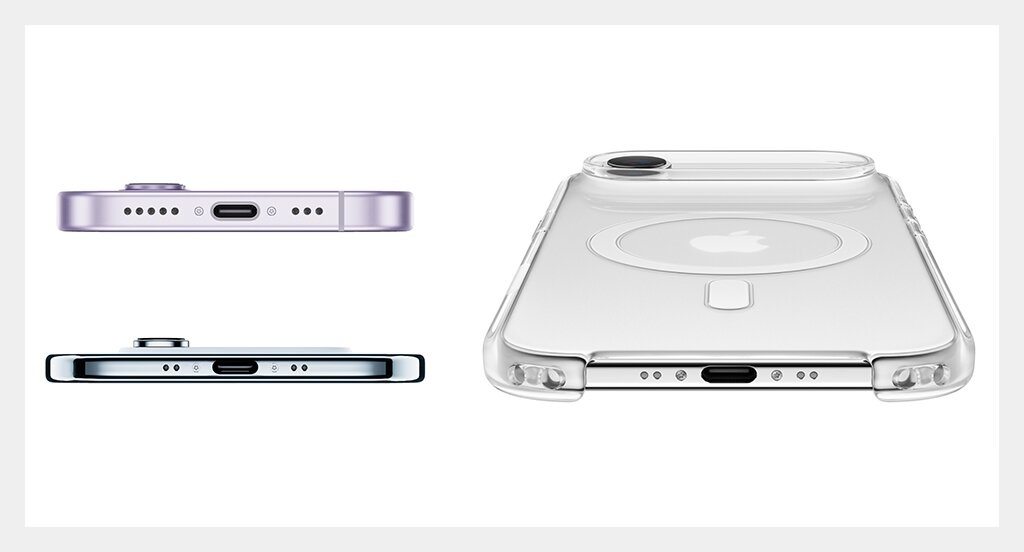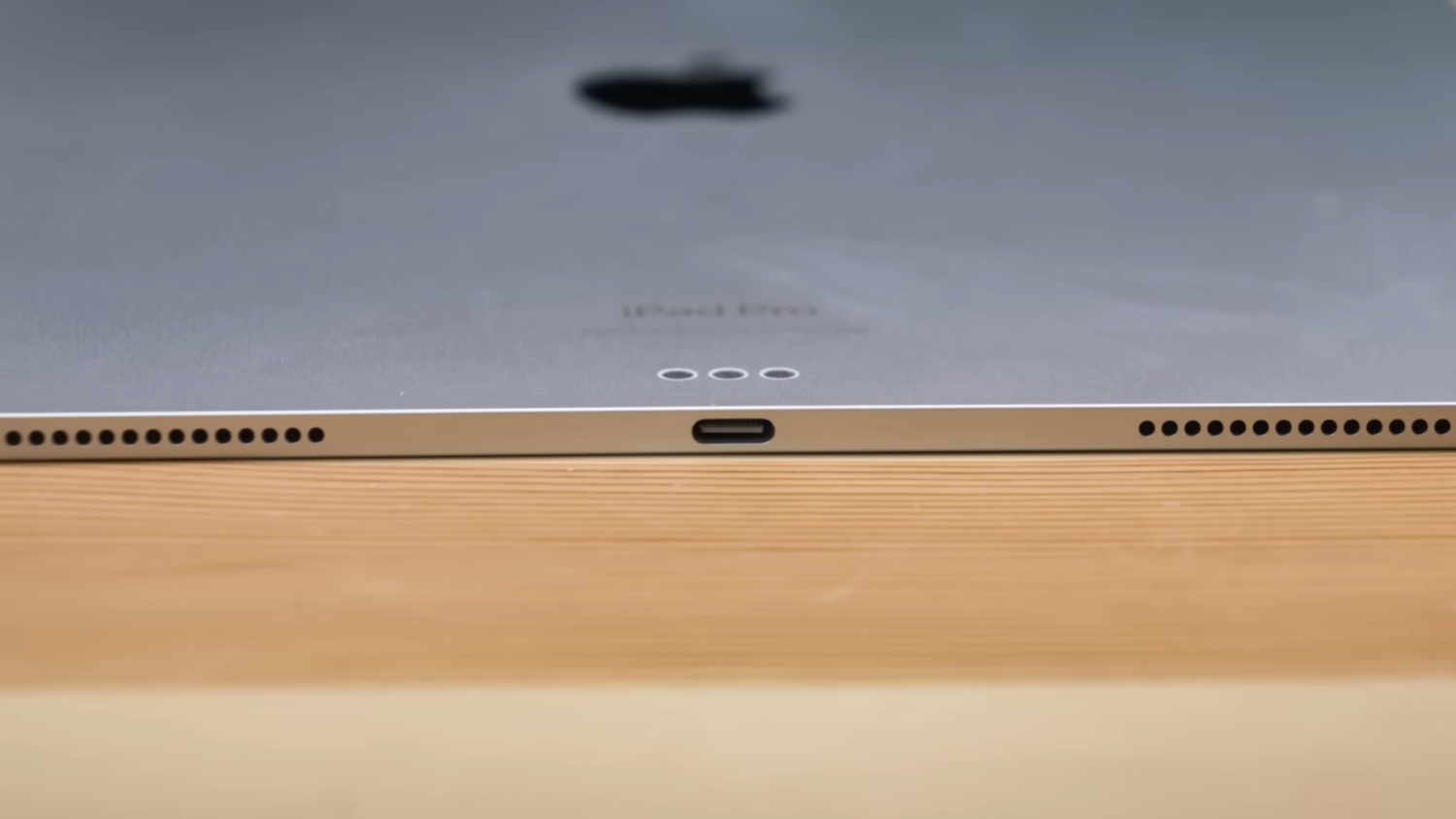 |
Apple had to shift the USB-C port to address the iPhone Air's thinness. Photo: Apple . |
Apple recently launched the iPhone Air with an incredibly thin design, raising curiosity about the possibility of equipping it with a USB-C port.
Apple revealed that to solve this technical problem, the company used a breakthrough manufacturing process: the USB-C port is 3D printed with titanium material. This is considered a milestone in the engineering industry, helping the device to be thin while ensuring durability and features.
Accordingly, the new 3D printed USB-C port made of titanium is not only thinner, more durable but also more material-saving than the traditional forging method.
 |
The exact location of the USB-C port on the iPhone Air. Photo: Apple. |
The process uses metal 3D printing technology to create parts layer by layer from titanium powder based on a precise CAD model. Thanks to that, Apple has overcome the physical limits to create the thinnest iPhone possible.
The use of 3D printed titanium USB-C ports offers three key benefits: thin design, durable construction, and material savings. This also aligns with Apple's commitment to sustainability.
This innovation builds on the experience of the 13-inch iPad Pro M4, Apple's thinnest product to date. Conventional USB-C charging cables are even thicker than this device, showing that the port is a major barrier to achieving a thinner design.
Even though the iPhone Air (5.6mm) is still thicker than the M4 iPad Pro (5.1mm), Apple needed an advanced solution that wouldn't compromise basic charging and data transfer functionality.
 |
The USB-C port on the 13-inch iPad Pro, Apple's thinnest device yet. Photo: PhoneRepairGuru. |
The combination of titanium material and 3D printing technology not only makes the charging port thinner but also increases durability, addressing concerns about resistance to bending on ultra-thin devices.
Notably, this advanced manufacturing technique is currently only applied to the iPhone Air. The iPhone 17, iPhone 17 Pro, and iPhone 17 Pro Max models still use the traditional USB-C port.
But 3D printing titanium isn’t limited to the iPhone Air. Apple has also used the same technique for the high-end Apple Watch Ultra 3 and Apple Watch Series 11 cases, which use about 50 percent less raw materials than the previous generation while maintaining structural strength.
In terms of performance, despite the physical structure breakthrough, the iPhone Air's USB-C port still maintains USB 2.0 data transfer speeds (480 Mbps), which is equivalent to standard iPhone models. This shows that Apple has focused on revolutionizing the physical structure of the port, while data transfer capabilities remain consistent with current specifications.
The birth of the iPhone Air is a clear example of Apple constantly pushing the boundaries of materials and manufacturing engineering, pursuing ambitious design goals.
Source: https://znews.vn/cach-apple-tai-dinh-nghia-cong-usb-c-post1584718.html





![[Photo] Science and Technology Trade Union honors exemplary workers and excellent union officials](https://vphoto.vietnam.vn/thumb/1200x675/vietnam/resource/IMAGE/2025/9/17/842ff35bce69449290ec23b75727934e)
![[Photo] General Secretary To Lam chairs a working session with the Standing Committee of the Government Party Committee](https://vphoto.vietnam.vn/thumb/1200x675/vietnam/resource/IMAGE/2025/9/17/cf3d855fdc974fa9a45e80d380b0eb7c)





























































































Comment (0)